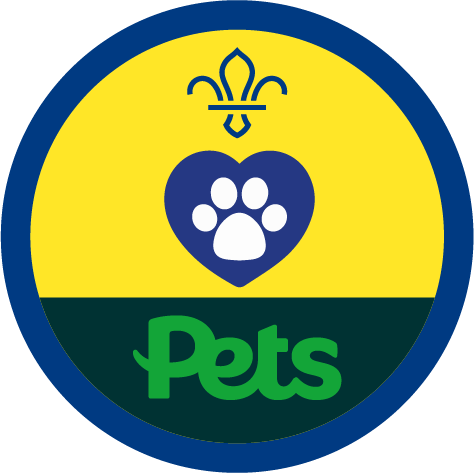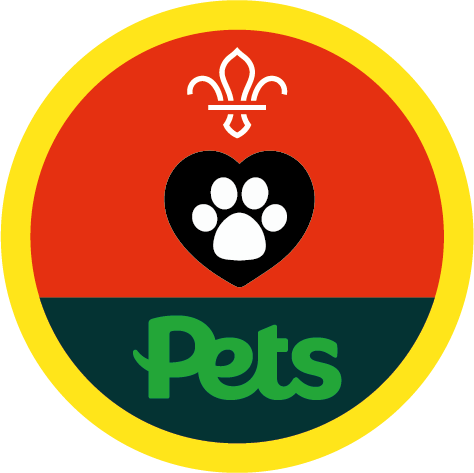
Make a small pet foraging box
You’ll need
- Cardboard boxes
- Non-toxic, pet safe materials, such as shredded paper or straw
- Natural materials, such as dried leaves, dried flowers or sticks
- Sand (optional)
- Toilet roll tubes (optional)
- Small dry treats suitable for your pet
- Small toys suitable for your pet (optional)
Before you begin
- Use the safety checklist to help you plan and risk assess your activity. There's also more guidance to help you carry out your risk assessment, including examples.
- Make sure all young people and adults involved in the activity know how to take part safely.
- Make sure you’ll have enough adult helpers. You may need some parents and carers to help if you’re short on helpers.
Planning and setting up this activity
- Anyone can take part in this activity. This is a good activity for anyone who has, or spends time with, a small pet, such as a hamster or guinea pig. However, people don’t need to have their own pet to complete their Animal Friend or Animal Carer activity badge, and they may know someone they can give their foraging box too. You could also donate the foraging boxes to a local animal rescue centre, but always check with them first what they need and if they’ll accept them.
- You’ll need a box that’s a suitable size for the chosen animal. It should be large enough for them to comfortably explore. For example, for a hamster, this could be a shoebox. You may wish to ask young people to each bring in a box to use.
- Make sure all the materials, treats and toys used are suitable for your chosen animal. Different animals will have different needs. You may wish to ask people to bring in items for their pet.
- You may want to visit a Pets At Home to ask for advice on what to include in a foraging box for each animal or pet.
Foraging’s when animals search for and gather food in their environment, such as birds finding seeds or squirrels searching for nuts. A foraging box is for small animals, such as hamsters, guinea pigs or rabbits. It’s a box filled with safe material, such as shredded paper or straw, with toys and treats hidden inside. It’s a treasure hunt for pets!
A foraging box is a way to keep an animal’s mind busy and their body active. This helps keep them healthy and happy. It gives them a chance to carry out their natural behaviours that they’d rely on in the wild to find food.
Giving our household pets opportunities to exercise and to behave naturally is part of the 5 Welfare Needs that owners need to be able to provide their pet. You can learn more about the 5 Welfare Needs on this page.
Running this activity
- Gather everyone together and ask if anyone has any pets.
- Ask if anyone knows what foraging is and why animals do it. Tell everyone that you’re all going to make foraging boxes for animals, either pets that people have or for a local animal rescue centre. You may wish to explain more about what a foraging box is.
- Everyone should take their box, making sure it’s clean and dry.
- People should fill their box with materials for their chosen animal to start foraging through. You could try shredded paper, straw or other natural materials, such as dried leaves, dried flowers or sticks. Avoid using glossy magazines, newspaper, foam, plastic packing materials or any rubbish.
- To make it more exciting, you can add extra pet-safe items, such as cardboard tubes, for your pet to explore. Alternatively, people may wish to do something more creative, such as building a hamster maze out of cardboard within the box.
- Next, hide dry treats in your foraging box for your furry friend to find. Depending on your pet, choose some suitable, safe treats, such as seeds, dried fruits, vegetables or pre-packaged pet treats. You could even add some safe, suitable and small toys too.
- If you’re putting a lid on your box, make sure to add some ventilation holes in the lid and sides. This will help to let air in and out.
- At home, everyone should place their foraging box somewhere where their pet can easily get to it. Tell everyone they need to place it on a stable, flat surface, where it won’t tip over when their pet explores it or climbs on it.
- Tell everyone to always make sure they supervise their pet while it uses the foraging box to make sure it’s happy and safe.
There are 5 Welfare Needs that an animal must have from their owner to be safe and happy its whole life. These are:
- A safe place to live: Animals should have the right type of home, including shelter, space and opportunities to exercise, as well as somewhere comfortable to rest and hide.
- Food and water: Animals need to have access to fresh, clean drinking water all the time. They should be fed the right amount of food and the correct type of food to keep them fit and healthy.
- To behave normally: Animals should have enough space, as well as the correct toys and safe home, so they can behave normally.
- Having the right company: Some animals need to have friends of their own kind. Animals should have the right sort of company, but others should be kept on their own. You should always find out what is best for your chosen pet before you get it.
- Good health: Animals should be protected from pain, suffering, injury and disease. They should be treated by a vet if they are sick or injured.
Reflection
This activity is a good opportunity to think about what it means to be a responsible pet owner. Looking after a pet is a big responsibility. It’s important that everyone who owns a pet can meet their 5 Welfare Needs to keep them safe and happy for their whole lives. Can anyone remember the 5 Welfare Needs?
Safety
All activities must be safely managed. You must complete a thorough risk assessment and take appropriate steps to reduce risk. Use the safety checklist to help you plan and risk assess your activity. Always get approval for the activity, and have suitable supervision and an InTouch process.
- Craft: Unusual substances
Supervise young people appropriately when they’re using unusual substances, such as powdered paint, ash or dirt. Be aware of any medical conditions that could be affected by what’s being used. Make sure you follow all relevant safety guidance or manufacturers guidelines, where available. Make sure you dispose of it appropriately too, in line with safety guidance.
To make this activity easier or harder, you can make your foraging box as simple or as complex as you’d like. You can add more materials to add different textures. You can also add different things, such as cardboard tubes, for pets to explore.
- Some people might not feel comfortable handling the different materials and textures, and might want to wear in gloves.
- People can work in small groups or in a pair to create their foraging box if they made need extra support.
All Scout activities should be inclusive and accessible.

